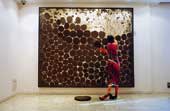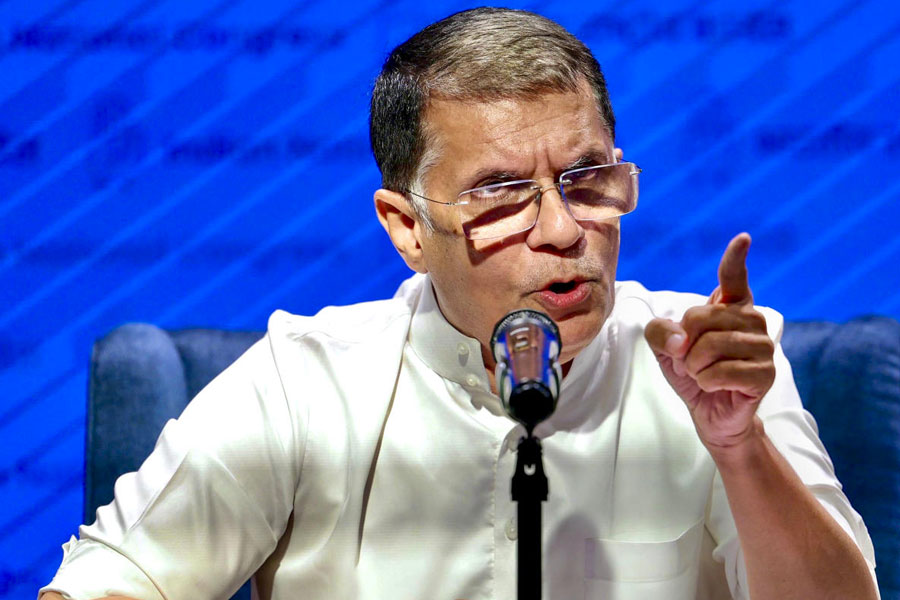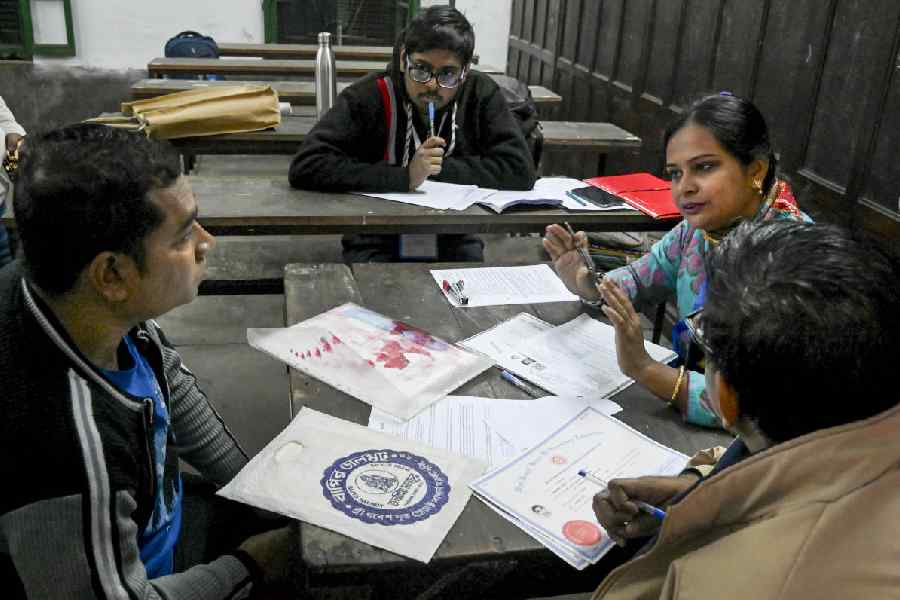 |
| A work by Shakila on display at CIMA Gallery. Picture by Pabitra Das |
Art exhibitions with the overarching agenda of presenting an overview of a certain period of history often overlook the work of tribal and folk artists, fearing that “high” art cannot be placed on the same pedestal, or displayed on the same walls, as the works of marginalised peoples.
By including them in the huge exhibition of 60 works of Indian art of our times, CIMA Gallery has taken a courageous step, and broken new ground, as the amazing works of the unlettered Shakila and Swarna Chitrakar make clear.
At the exhibition opening on Friday evening, titled Freedom, 60 Years after Independence, the gallery presents an equal number of works of a great variety, beginning with some artists who had flowered during the British rule, and had continued to work post-Independence.
It continues with works of the generation for whom perhaps the cyber world, the boons of information technology and a booming economy are more real than the real poverty that continues to dog this country.
Hot-shot young or relatively young artists, such as Chintan Upadhyay and Subodh Gupta, do not hesitate to appropriate/borrow ideas, strategies and even images from whatever is globally in circulation, albeit with local colouring, whereby one can identify them as works of Indian artists.
Upadhyay, for example, uses the images of the diabolical dancing babies that at one time overran cyberspace, and superimposes fragments of Indian miniatures on them.
Gupta, who has won the sobriquet of Indian Damien Hirst, has created installations and sculptures with shiny stainless steel utensils as a symbol of middle-class aspirations.
Jitish Kallat takes viewers into the thick of the traffic gridlock in a canvas supported by brass gargoyles, modelled on a standard feature of Mumbai’s Neo-Gothic buildings.
Sanjeev Sonpimpare, on the other hand, uses a realistic style to depict the waking dream of urban life.
When one sees Kingsuk Sarkar’s nervous lines on two huge white canvases creating a horror-struck little child, one relates it to Somnath Hore’s sculpture of a famine victim throwing its arms up in despair.
This exhibition has brought together the works of two major art institutions — MS University in Baroda and Kala Bhavan in Santiniketan.
Both Shakila and Swarna have come up with outstanding works. Shakila, in particular, has surpassed herself. This artist, who continues to live in the backwaters of South 24-Parganas, defies classification, for making cow dung cakes is part of her daily existence, and she displays them unselfconsciously, minus the baggage of theory. It is as strong an image as ever can be.











